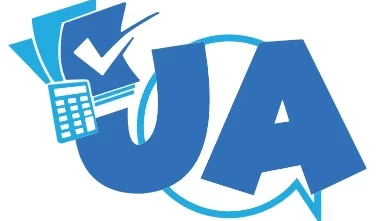\

demand letter in kenya serves as a critical first step in the dispute resolution process in Kenya, often determining whether parties can settle their differences amicably or must proceed to litigation. This comprehensive guide explores the essential elements of demand letters in Kenya, their legal significance, proper formatting, and strategic considerations for drafting effective communications that achieve their intended purpose. At Junyan & Associates, we help clients draft and issue professional demand letters that are clear, persuasive, and legally sound—often leading to settlement before litigation becomes necessary.
Understanding Demand Letters in Kenya’s Legal Framework.
, a demand letter in Kenya serves two key purposes:
- Notification: It formally informs the recipient of the claim against them.
- Opportunity to Settle: It allows the parties to resolve the issue amicably before legal action is taken.
Under the Civil Procedure Rules, sending a demand letter is a common precondition before filing a civil suit.
What Is a Demand Letter?
A demand letter in Kenya (also called a letter of demand or letter before action) is a formal written communication sent by one party to another requesting specific action, typically payment of a debt, fulfillment of contractual obligations, or cessation of harmful activities. In Kenya’s legal system, demand letters operate within several legal frameworks:
- The Civil Procedure Rules (2010)
- The Limitation of Actions Act (Cap 22)
- Various contractual and commercial laws
- Industry-specific regulations
While not explicitly required by law for all matters, demand letters in Kenya serve several important legal functions:
- Pre-litigation requirement: In many instances, courts expect parties to attempt resolution before filing suit
- Evidence of notice: Documents that the recipient was formally notified of the claim
- Limitation period protection: Helps toll or pause the statute of limitations in certain circumstances
- Good faith demonstration: Shows willingness to resolve matters without court intervention
Common Situations Requiring a Demand Letter.
- Unpaid debts or invoices
- Breach of contract
- Tenant or landlord disputes
- Employment termination and unpaid dues
- Personal injury or insurance claims
Key Elements of a Demand Letter in Kenya
A professionally drafted demand letter should contain:
- The claimant’s details: Name, address, and contact information.
- The recipient’s details: The person or entity being addressed.
- Facts of the case: A concise explanation of the issue or breach.
- The legal basis of the claim: References to contract terms, invoices, or laws violated.
- The amount or action demanded: Clear statement of what is required.
- Deadline for compliance: Typically 7–14 days to respond or settle.
- Warning of legal action: Notice that failure to comply will result in court proceedings.
Legal Significance of Demand Letters
1. Establishing Formal Notice
When properly delivered, a demand letter serves as proof that the recipient was formally notified about the claim, which may be crucial for:
- Default proceedings: Demonstrating the defendant had knowledge of the claim
- Interest calculations: Establishing when interest on unpaid amounts began to accrue
- Costs recovery: Supporting claims for legal costs in subsequent litigation
2. Setting the Foundation for Legal Action
A well-crafted demand letter:
- Defines the scope of the dispute
- Establishes the legal and factual basis for claims
- Creates a record of attempted resolution
- May be exhibited in court proceedings
3. Interrupting Limitation Periods
Under Kenyan law, a properly drafted and delivered demand letter in Kenya can sometimes interrupt the running of limitation periods by:
- Acknowledging an existing debt or obligation
- Creating written evidence of the claim
- Establishing a clear timeline of demand and refusal
4. Triggering Contractual Provisions
Many contracts contain specific provisions activated by formal demands, including:
- Default interest rates
- Acceleration clauses
- Penalty provisions
- Dispute resolution mechanisms
Essential Elements of an Effective Demand Letter in Kenya
1. Header Information
A properly formatted demand letter in Kenya should include:
- Sender’s details: Full name, address, and contact information
- Recipient’s details: Full name, correct address, and position (if applicable)
- Date: The specific date when the letter is sent
- Reference number: A unique identifier for future correspondence
- Subject line: Clear indication that this is a demand letter (e.g., “DEMAND LETTER – FINAL NOTICE BEFORE LEGAL ACTION”)
- Delivery method: Registration number if sent via registered mail or courier tracking information
2. Opening Statement
The opening paragraph should clearly establish:
- The sender’s identity and relationship to the recipient
- The general nature of the claim
- Reference to any previous communications on the matter
- A clear statement that this constitutes a formal demand
3. Factual Background
This section should provide a chronological account of relevant facts, including:
- Origin of relationship: How the parties became involved
- Key events: Timeline of important developments
- Breach details: Specific actions or inactions constituting the breach
- Documentation references: Mention of contracts, invoices, or other relevant documents
4. Legal Basis for Claim
The letter should articulate the legal foundation for the demand:
- Contractual provisions: Specific clauses violated
- Statutory violations: Relevant laws and sections
- Common law principles: Applicable legal doctrines
- Case precedents: Relevant judicial decisions (if appropriate)
5. Specific Demands
This critical section must clearly outline:
- Precise action required: Payment amount, specific performance, or cessation of activities
- Timeline for compliance: Specific deadline (typically 7-14 days)
- Payment details: Bank account information or payment methods
- Conditions for settlement: Any terms that would constitute full resolution
6. Consequences of Non-Compliance
The letter should outline potential consequences if demands are not met:
- Legal proceedings: Type of action to be filed
- Additional costs: Legal fees, court costs, interest
- Other remedies: Repossession, contract termination, reporting to credit bureaus
- Alternative dispute resolution: Possibility of mediation or arbitration
7. Closing and Authentication
The letter should conclude with:
- Compliance encouragement: Statement promoting amicable resolution
- Contact information: For response or negotiation
- Signature: Physical or digital signature of the sender or legal representative
- Professional capacity: If sent by an advocate, clear indication of representative capacity
- CC list: If copies are being sent to other parties
Types of Demand Letters Commonly Used in Kenya
1. Debt Collection Demand Letters
Purpose: To recover unpaid financial obligations
Key Components:
- Amount owed with breakdown of principal and interest
- Invoice numbers and dates
- Payment history showing previous amounts paid
- Interest calculations per contract or law
- Specific payment deadline and methods
Legal Considerations:
- Must comply with the In Duplum Rule (interest cannot exceed principal)
- Should reference relevant loan agreements or credit terms
- May need to calculate interest as per the Central Bank Rate + margin
2. Breach of Contract Demand Letters
Purpose: To seek remedy for failure to fulfill contractual obligations
Key Components:
- Specific contract clauses violated
- Details of performance expected vs. actual performance
- Documentation of damages suffered
- Options for specific performance or compensation
Legal Considerations:
- Must demonstrate material breach, not minor deviations
- Should articulate how breach has caused harm
- May need to reference contractual notice provisions
3. Property-Related Demand Letters
Purpose: To address property disputes, encroachment, or damage
Key Components:
- Property identification (title number, location)
- Nature of violation (trespass, boundary dispute, damage)
- Evidence of ownership or right to possession
- Specific remedy sought (removal, restoration, compensation)
Legal Considerations:
- Should reference land registration documents
- Must address adverse possession claims if relevant
- Should include survey details in boundary disputes
4. Employment-Related Demand Letters
Purpose: To address wrongful termination, discrimination, or unpaid benefits
Key Components:
- Employment relationship details (position, dates, terms)
- Specific employment rights violated
- Calculation of unpaid wages, benefits, or severance
- Reference to employment contracts and labor laws
Legal Considerations:
- Must comply with Employment Act provisions
- Should reference collective bargaining agreements if applicable
- May need to demonstrate exhaustion of internal grievance mechanisms
5. Intellectual Property Demand Letters
Purpose: To address infringement of patents, trademarks, copyright or trade secrets
Key Components:
- Description of protected intellectual property
- Evidence of ownership or rights
- Details of infringement activities
- Cease and desist demands with timelines
Legal Considerations:
- Should reference registration numbers for formal IP rights
- Must demonstrate actual infringement, not just similarity
- Should address potential fair use or license defenses
6. Insurance Claim Demand Letters
Purpose: To pursue settlement of insurance claims
Key Components:
- Policy number and coverage details
- Date and circumstances of covered event
- Documentation of losses and expenses
- Previous claim communications
- Settlement amount demanded
Legal Considerations:
- Must demonstrate compliance with policy notification requirements
- Should address any policy exclusions or limitations
- Must include documentation supporting valuation of claim
Strategic Considerations for Effective Demand Letters
1. Tone and Language
The tone of a demand letter significantly impacts its effectiveness:
- Professional not personal: Focus on facts and legal rights, not emotional language
- Firm but reasonable: Demonstrate seriousness without seeming unreasonable
- Precise and clear: Avoid ambiguity that could weaken the demand
- Authoritative not threatening: Project confidence in the legal position
2. Evidence and Documentation
Supporting the demand with proper documentation strengthens its impact:
- Attach key documents: Include copies of contracts, invoices, or relevant correspondence
- Reference specific evidence: Mention witness statements, photographs, or expert reports
- Establish clear timeline: Document when obligations arose and were breached
- Authenticate materials: Ensure copies are certified if originals are important
3. Timing Considerations
Strategic timing can enhance the effectiveness of demand letters:
- Business cycles: Consider sending when businesses typically process payments
- Limitation periods: Ensure sufficient time remains to file court proceedings if necessary
- Cooling-off periods: Allow reasonable time for consideration and response
- Regulatory timelines: Align with industry-specific notice requirements
4. Delivery Methods
The method of delivery affects both legal standing and practical impact:
- Registered mail: Provides proof of delivery and receipt
- Courier services: Offers tracking and confirmation
- Hand delivery: Ensures immediate receipt with acknowledgment
- Electronic delivery: May be acceptable if followed by hard copy or acknowledged
Preparing an Effective Demand Letter: Step-by-Step Guide
Step 1: Gather All Relevant Information
- Compile documentation: Collect all contracts, invoices, receipts, and correspondence
- Verify facts: Confirm dates, amounts, and details for accuracy
- Research legal basis: Identify specific legal provisions supporting your claim
- Verify recipient details: Ensure correct legal name and current address
Step 2: Draft the Letter
- Create proper heading: Include all necessary identifying information
- Present chronological narrative: Build a clear timeline of events
- Articulate specific demands: Be precise about what action is required
- Set reasonable deadline: Allow sufficient time for compliance (typically 7-14 days)
- Outline consequences: Clearly state next steps if demands are not met
Step 3: Review and Refine
- Check legal accuracy: Ensure all legal claims are valid and properly stated
- Verify calculations: Double-check all amounts, interest, and penalties
- Eliminate emotional language: Remove any unnecessary hostile or inflammatory wording
- Ensure clarity: Confirm that demands and deadlines are unambiguous
Step 4: Deliver Properly
- Choose appropriate method: Select delivery option based on urgency and need for proof
- Document delivery: Maintain records of sending and receipt
- Follow up: Consider telephone follow-up to confirm receipt if appropriate
Step 5: Track and Document Response
- Record all communications: Maintain file of any responses received
- Note compliance attempts: Document partial payments or compliance efforts
- Prepare for next steps: Be ready to proceed with litigation if deadline passes
Common Mistakes to Avoid in Kenyan Demand Letters
1. Procedural Errors
- Incorrect recipient: Sending to wrong legal entity or individual
- Inadequate delivery: Failing to ensure and document proper receipt
- Missing crucial details: Omitting key dates, amounts, or account information
- Unreasonable deadlines: Demanding action in impossibly short timeframes
2. Content Errors
- Factual inaccuracies: Including incorrect dates, amounts, or events
- Legal misstatements: Citing inapplicable laws or misinterpreting legal rights
- Excessive demands: Requesting amounts not supported by actual damages
- Vague requirements: Failing to specify exactly what action is required
3. Tone and Approach Errors
- Overly aggressive language: Using threatening or abusive terminology
- Personal attacks: Focusing on character rather than conduct
- Emotional arguments: Relying on appeals to emotion rather than legal rights
- Ultimatums: Presenting inflexible demands that discourage negotiation
When to Seek Professional Assistance
While individuals and businesses can prepare demand letters themselves, professional assistance is advisable in these situations:
Scenarios Warranting Legal Counsel
- Complex legal issues: When claims involve intricate legal principles
- High-value disputes: When significant amounts are at stake
- Multiple parties: When responsibility is shared among several entities
- Technical subject matter: When specialized knowledge is required to articulate claims
- Strategic litigation planning: When the demand letter is part of a broader legal strategy
Finding Legal Assistance in Kenya
- Law Society of Kenya referral service: For finding specialized advocates
- Legal aid organizations: For those who cannot afford private counsel
- University legal clinics: For basic guidance on simpler matters
- Alternative dispute resolution centers: For mediation-focused approaches
Response Options for Demand Letter in Kenya Recipients
Understanding how to respond to a demand letter in Kenya is equally important:
1. Acceptance and Compliance
- Acknowledge receipt and accept the demands
- Negotiate payment terms or compliance schedule if needed
- Document full compliance to prevent future claims
2. Negotiated Settlement
- Respond with counterproposal
- Request a meeting or discussion
- Seek partial compliance or installment arrangements
3. Rejection with Justification
- Provide factual corrections
- Present legal defenses
- Request additional documentation or proof
4. Strategic Silence
- Consult legal counsel before responding
- Consider whether silence benefits your position
- Prepare for potential litigation
The Connection between Demand Letters and Litigation
Understanding how demand letters in Kenya relate to court proceedings helps in strategic planning:
As Evidence in Court
Demand letters in Kenya frequently become exhibits in court proceedings, serving to:
- Demonstrate prior notification of claims
- Establish timeline of dispute
- Show reasonableness of plaintiff’s position
- Support claims for interest and costs
Impact on Court Costs and Orders
Kenyan courts increasingly consider pre-litigation conduct when awarding costs:
- Unreasonable rejection of valid demands may result in cost penalties
- Failure to respond to reasonable demands may influence judicial attitudes
- Exaggerated or unsupported demands may prejudice cost recovery
Alternative Dispute Resolution Opportunities
A well-crafted demand letter can facilitate resolution without court involvement:
- May trigger contractual dispute resolution clauses
- Can serve as starting point for mediation
- Provides framework for settlement negotiations
How Junyan & Associates Can Help?

At Junyan & Associates, we draft and issue legally compliant and persuasive demand letters tailored to your unique circumstances. Our legal experts:
- Review your claim and supporting evidence.
- Draft a professional demand letter that reflects your legal rights.
- Follow up with the recipient and advise on the next steps.
- Pursue legal action if the matter remains unresolved.
Whether you’re an individual, a business, or an institution, our goal is to help you recover what’s rightfully yours—quickly and effectively.
Conclusion
A properly drafted and delivered demand letter serves as a powerful tool in Kenya’s legal landscape, often resolving disputes without the need for costly and time-consuming litigation. By understanding the essential elements, legal requirements, and strategic considerations outlined in this guide, individuals and businesses can craft effective demand letters that protect their rights and increase the likelihood of favorable resolution.
Whether seeking payment of debts, enforcement of contractual obligations, or remedies for property disputes, a well-constructed demand letter demonstrates professionalism and legal awareness while establishing a solid foundation for further legal action if necessary. By avoiding common mistakes and following best practices, you can maximize the effectiveness of this crucial pre-litigation tool.
for more information and help contact as junyanandassociates.


